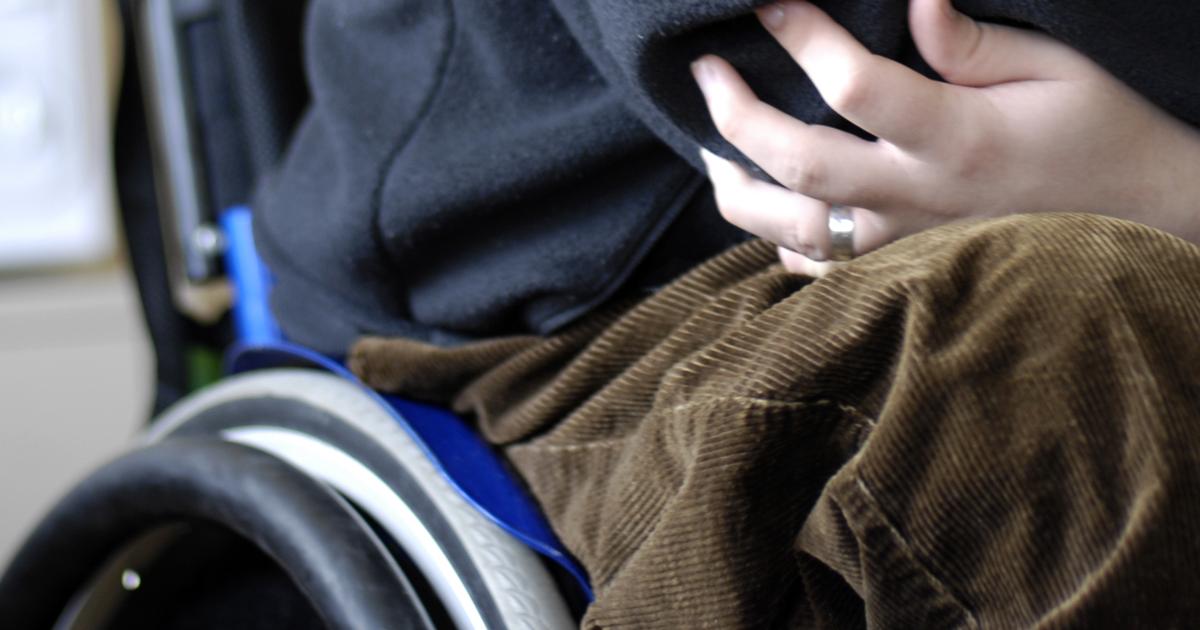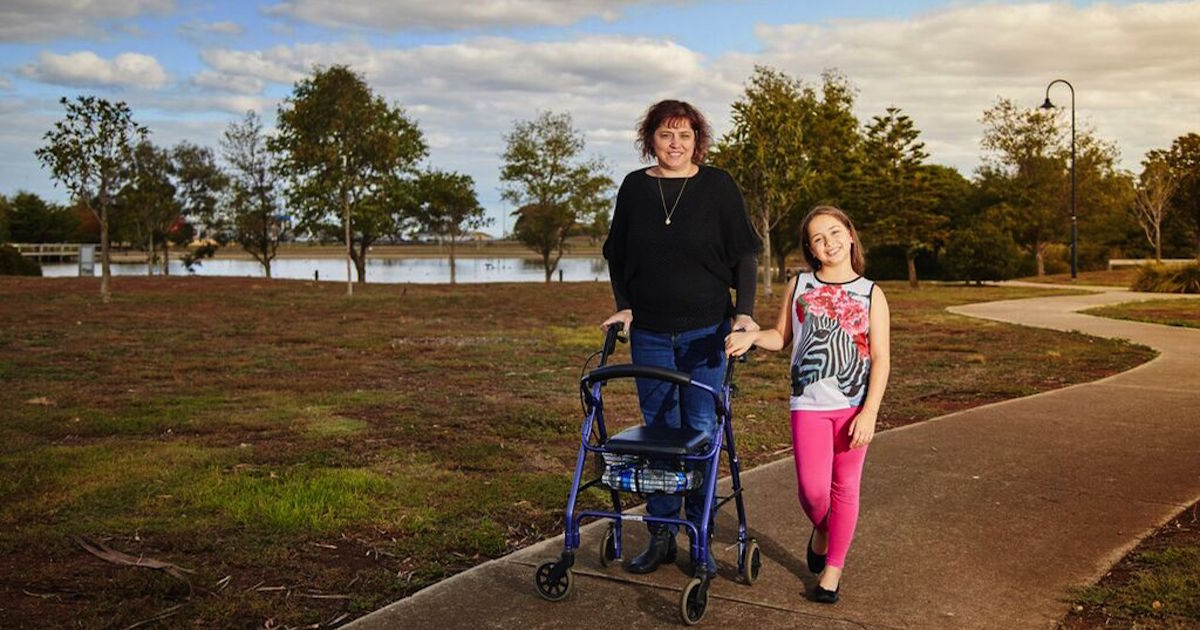What Is Conversion Disorder?
To understand conversion disorder, individuals must first understand somatization, which conversion disorder is a form of. Somatization is experiencing psychological distress through physical (somatic) symptoms, and often seeking medical assistance for physical ailments rather than psychological ones first. As stated, conversion disorder is a form of somatization, and as such, it is related to somatic symptom disorder. Conversion disorder itself is a condition in which an individual experiences symptomsthat affecttheir nervous system (e.g., paralysis) without an explanation from a physical injury or illness. Conversion disorder often occurs after significant emotional, psychological, or physical distress.
Start reading to learn everything you need to know about conversion disorder, including its symptoms, treatment options, as well as some key prevention methods.
Signs And Symptoms

Symptoms of conversion disorder and their severity vary based on the individual experiencing them. However, they typically include a range of neurological symptoms, such as sudden vision issues (e.g., blindness or double vision), paralysis (e.g., one limb), speech paralysis, slurred speech, and difficulty swallowing. Other neurological symptoms include a loss of senses (e.g., touch, smell, or hearing), tremors, weakness or numbness in limbs, and have trouble balancing. Reports indicate some individuals with conversion disorder may also experience seizures or hallucinations.
In most cases of conversion disorder, the symptoms will appear without warning when a stressful event occurs. They also tend to disappear suddenly as well, typically once the perceived danger or stress has passed. Though symptoms may appear only once, it is also common for the same symptoms to appear when the stressor that caused them reappears or is remembered.
Continue reading to learn about the causes of conversion disorder.
What Are The Causes?

Research regarding conversion disorder indicates the most common cause of the condition is a physical or psychological stressor, following with sudden symptoms. Some stressors that may cause conversion disorder include physical illness, post-traumatic stress disorder, and a dissociative disorder. Individuals in the military or law enforcement (e.g., soldier, police officer, or federal agent) are at a higher risk of developing conversion disorder, as these jobs tend to produce more violent, high-stress situations and environments, as well as increasing the risk of developing post-traumatic stress disorder. Unfortunately, some individuals may experience conversion disorder with no discernable stressor causing the symptoms. This indicates the cause of the condition can be unknown in some instances.
However, some conversion disorder research indicates the brains of some individuals with this condition have either reduced or increased blood flow to certain parts of the brain, which may result in the neurological symptoms they experience, depending on which part of the brain is affected (e.g., the areas communicating with other body parts).
Get familiar with potential complications of conversion disorder next.
Complications Linked to Conversion Disorder

The most common complication that occurs with conversion disorder is for a patient to become disabled because of their symptoms. The disability they experience may be similar to a disability that occurs with a medical condition. The exact way this disability presents depends largely on how the physical symptoms present. Some patients have experienced blindness or hearing loss as a result of conversion disorder. Others might experience chronic, widespread pain throughout their entire bodies. Some individuals have joint pain and fatigue that can't be explained by other conditions. Others deal with ongoing muscle weakness and tenderness. Symptoms may become serious enough for an affected individual to need to use mobility devices like a wheelchair or cane. Not everyone who uses a wheelchair is completely unable to walk, but they may not be able to walk as far as an able-bodied person.
Continue reading to learn how doctors diagnose conversion disorder.
How To Properly Diagnose Conversion Disorder

Like many other disorders recognized in the Diagnostic and Statistical Manual of Mental Disorders Fifth Edition(DSM-5), a diagnosis of conversion disorder must meet specific criteria. For conversion disorder, the patient must experience at least one symptom altering a motor or sensory function (e.g., leg paralysis when trying to move legs), no physical explanation for the symptoms, and the symptoms must cause significant distress or deficits in daily life, social or professional situations, or require medical evaluation. In addition to these, there must not be a better explanation, such as another medical condition, for the symptoms. Diagnosing conversion disorder can stem from multiple health professionals, such as the patient’s primary doctor, as well as a psychologist or psychiatrist, as well as a neurologist, given the neurological indicators from conversion disorder.
Continue reading to learn about exclusions made during diagnosis next.
Exclusions During Diagnosis

Conversion disorder cannot be diagnosed until several exclusions have been made. Doctors need to run tests to prove the symptoms do not have a physical or neurological basis. Diagnosticians must exclude any disorders that could present with similar symptoms. These might include certain types of paralysis, epilepsy, multiple sclerosis, or a stroke. Neurological causes must be examined and excluded through a series of different tests and studies. Another thing that must be excluded is feigning. A patient cannot be deliberately feigning or faking their symptoms. However, it's difficult to definitively prove someone is not faking symptoms; it can only be proven they are faking symptoms if they confess. There aren't any clinical techniques that can be relied upon to tell whether a person is lying. For conversion disorder to be diagnosed, these components must be excluded, and a doctor must be able to include a psychological component. Many conversion disorder patients may be misdiagnosed with other illnesses throughout the process, as has been observed in multiple research studies.
Of course, once a diagnosis is reached, treatment must begin. Continue reading to learn about the treatment options available for those with conversion disorder.
Treatment Options For Conversion Disorder

Some patients can experience relief from their symptoms even without treatment after the initial diagnostic process. This occurs because they receive reassurance there is no underlying issue causing their symptoms, validation that the symptoms are real, and a thorough explanation of what conversion disorder is and why it is happening.
However, patients with lingering, recurring, or severe symptoms, or those who also have other mental or physical health issues, often require treatment for conversion disorder. Treatment options in these cases include undergoing psychotherapy, commonly called talk therapy, physical or occupational therapy, and hypnosis. Medication is rarely prescribed for conversion disorder itself but often comes into play when treating other psychological conditions occurring in conjunction with conversion disorder, such as post-traumatic stress disorder, generalized anxiety disorder, or clinical depression.
Read about patient prognosis in regards to conversion disorder next.
Patient Prognosis

The majority of cases of conversion disorder are not severe enough to cause permanent disability or a shortened lifespan. The symptoms tend to come on and last for several days or weeks. It's also common for patients to experience a sudden reduction or complete elimination of these symptoms. The symptoms themselves don't tend to be life-threatening, but they can be painful and disabling. In cases where the symptoms cause blindness or other impairments, they can also cause affected individuals to end up in dangerous situations. The symptom complications can be debilitating even after the initial symptoms have cleared up. In addition, many conversion disorder patients end up getting several medical tests to look for physical or neurological issues. Some of these tests are invasive and can have complications of their own. With all of that said, most individuals with conversion disorder recover with time and reassurance. Evidence has shown around twenty-five percent of patients have recurring episodes or develop new conversion disorder symptoms at a later date.
Learn how to help a loved one with conversion disorder next.
How To Help A Loved One

It can be hard to know how to help a loved one who has conversion disorder. The situation is frustrating because the physical symptoms can be very scary, debilitating, and sometimes have disabling complications. Individuals feeling like something is wrong with their body is frightening, but being told it's 'all in their head' can be even more frightening. Conversion disorder patients may worry they sound crazy and they'll be laughed off or derided. The best thing to do for a loved one with conversion disorder is to listen honestly to their concerns and offer support. It's very important to remember even if the physical symptoms don't have a physical or neurological cause, they still feel very real. It won't help to tell the person to stop making a big deal over nothing or it's 'all in their head.' Instead, give them whatever support is possible as a friend or family member. Try to help alleviate sources of stress in their life by allowing them to vent and taking on responsibilities where it's possible.
Continue reading for tips on preventing conversion disorder.
Helpful Prevention Tips

Though it can be difficult to predict if or when conversion disorder will occur, there are still some techniques everyone can put into practice to prevent it as much as possible. This is especially important for those who live or work in high-stress environments, such as the previously mentioned soldiers, police officers, and federal agents.
Of course, the best way to prevent conversion disorder is to avoid emotional trauma and high-stress situations when possible. When this is not possible, however, prevention methods include engaging in regular stress-relieving activities, seeking treatment for other mental illnesses that may be present, maintaining positive personal and professional relationships, curating a healthy work and life balance, and maintaining a secure and calm family environment. Stress relief looks different for everyone, but some popular options include mindful breathing and meditation, yoga, listening to calming music, reading a favorite book, and getting a massage.
Uncover the history of conversion disorder next.
History Of Conversion Disorder

Conversion disorder has actually been described for thousands of years, though it hasn't always gone by that name. In 1900 BC, Egyptian medical practitioners believed symptoms of neurological dysfunction were caused by the movement of the uterus throughout the body. Treatment was varied based on where the uterus had moved. The original name for conversion disorder was hysteria. There's a long history of women with hysteria being exorcised or subject to inhumane medical treatments in an attempt to 'restore equilibrium.' It wasn't until the nineteenth century that hysteria was classified as a psychological disorder instead of a neurological one. There was a great deal of debate in the psychological communities regarding what exactly hysteria was and what caused it. Many psychologists sought to find a unifying factor that explained how conversion disorder occurs. In today's thinking, psychologists believe there isn't one underlying cause. The methods that cause symptoms to convert from mental to physical vary depending on the patient. What therapeutic techniques are most effective will also vary from patient to patient.
